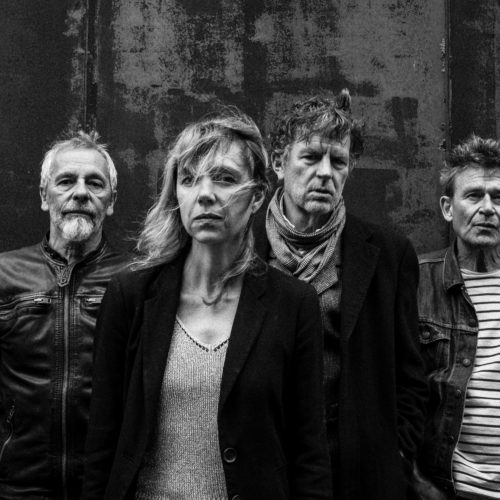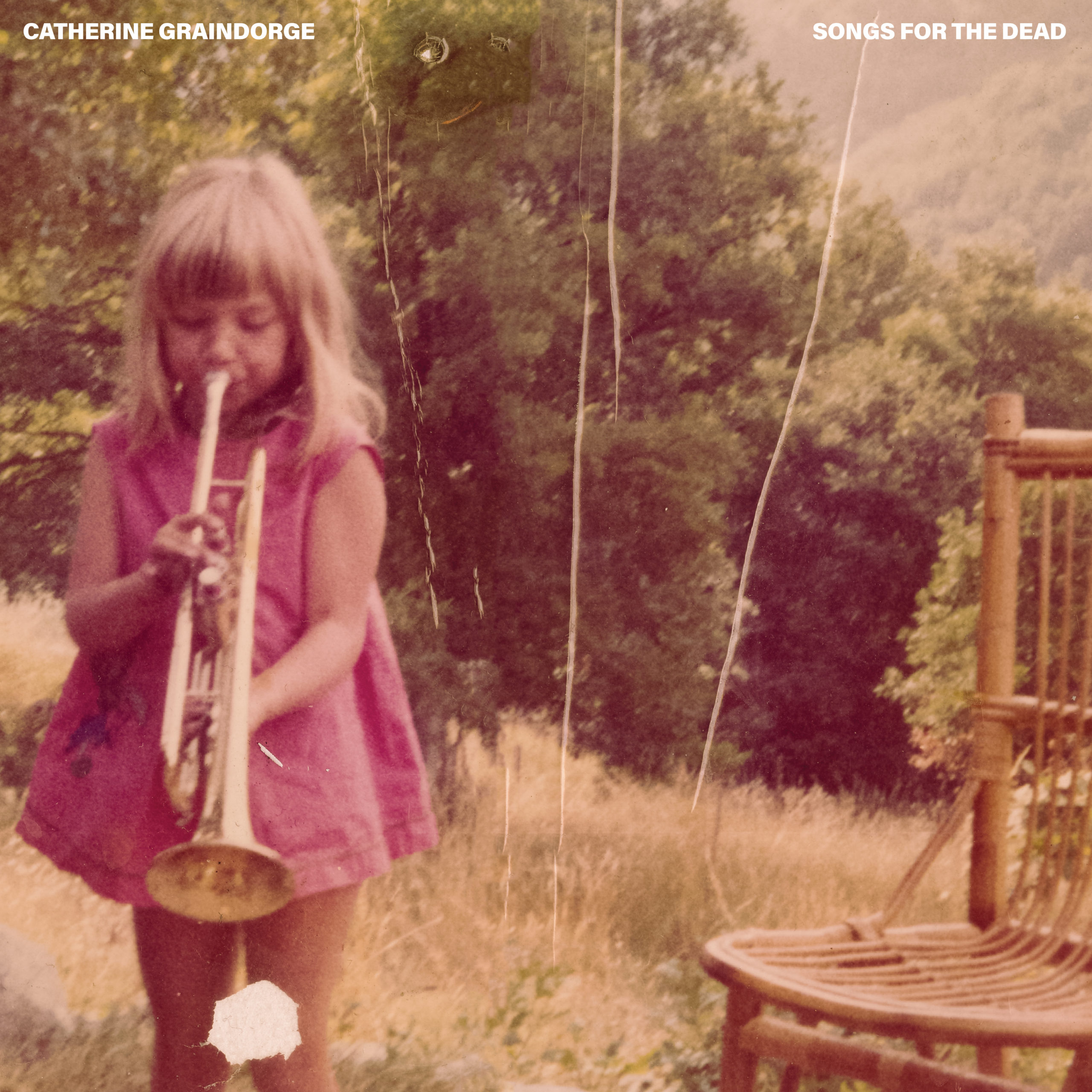
Songs For The Dead
—
out April 26, 2024
—
tak:til / Glitterbeat



Stories and myths. They ripple like rivers through our lives, our cultures. Some are ancient, others more recent, but they all help to shape us, to guide and console us along the ways of life and love and death. They have a quiet power, and that’s what Belgian musician and composer Catherine Graindorge explores on her new album, Songs for the Dead.
Aptly, it all began with words.
“I had a residency at a venue here in Brussels,” she recalls. Graindorge had recently finished working on The Dictator, her widely-acclaimed EP collaboration with the legendary Iggy Pop, “and I had the chance to work on something new. I had a book by Allen Ginsberg, and I wanted to go deeper into his poetry.”
Ginsberg was the most acclaimed poet of the Beat Generation. But Graindorge explored beneath the obvious, well-known work and discovered a piece called “A Dream Record,” which provided the spark for Songs for the Dead.
“The poem touched me, it made me think about art and life and reality, so I decided to construct the album around it.”
In the work, a dreaming Ginsberg visits Joan, the dead wife of writer William Burroughs who killed her while allegedly trying to emulate William Tell and shoot a glass off her head.
The pair laugh and talk of mutual friends as if she was still alive. But the reality of the grave returns and the dream fades.
“I didn’t know anything about Joan Vollmer, but the poem says everything about our lives,” Graindorge explains. “Something can happen and there’s no return, except in our dreams, when the dead come to visit us. Like the myth of Orpheus and Eurydice. In the eyes of Orpheus, Eurydice seems alive for a moment, but one look is enough for her to vanish into the world of the Dead. He wants to bring her back to life with his love for her.”
But only in dreams can love be enough to cheat fate.
Graindorge saw Ginsberg’s poem as the heart of Songs for the Dead. Recorded here as “This Is a Dream,” it explores the place where the veil between worlds becomes thin. The music she wrote for the tracks explores the beauty and loss, creating a floating, ethereal dialogue of music and voice that carries the listener forward.
Over the years, Graindorge has worked with an incredible cast of collaborators, including Iggy, Nick Cave, Hugo Race and producer John Parish (PJ Harvey). But for Songs for the Dead she wanted a small, tight ensemble, so she called on regular collaborators Simon Ho on keyboards, and bassist Pascal Humbert (16 Horsepower, Lilium, Détroit) who both know her and her music well. For a singer “I thought of Simon Huw Jones. His voice has a very theatrical quality, like a narrator. For him, literature is important; he’s attached to words. I sent him the Ginsberg poem and we talked about the Greek myth.”
Best known as the vocalist with And Also the Trees, Jones’s voice gives the lines gravity, a delivery between singing and speaking.
“I recorded demos of the music I’d written and sent them to him,” Graindorge recalls, “then he returned them with his ideas for the words. He understood what I was looking for.”
Things coalesced quickly, and by the time they went into the studio “almost everything was written, so we didn’t need to discuss much. We took six days to record the album, then another five to complete the mixing.”
All the mixing was analogue, Graindorge explains because “it’s warmer, and it makes more sense to me with my instruments and the way I write, acoustically on violin and viola. More like baroque music, in a way.”
Songs for the Dead is quite deliberately an album that gives space for the imagination, “where people can come and go in the music,” Graindorge says. And there’s plenty to explore in the stories of Orpheus and Eurydice and Ginsberg’s dream meeting with Joan Burroughs. Myths ancient and modern. Legends and stories.
“I like to tell a story,” she says. “I come from theatre, and I’m also an actor. These are narratives, questions and answers that relate and connect to each other.”
One of the most powerful of these stories is the pure sadness of “Joan” – the only piece here for which she wrote both music and lyrics. It caresses its loss, something she “wrote to challenge myself. I’m not really a singer, but this was a story I wanted to tell.” Graindorge’s viola and voice offer a sonic elegy.
It all culminates with “Time Is Broken,” where Jones and Graindorge (with daughter Lula Rabinovitch) duet until the music tails away and the final lines conclude: “There is no more to say.”
Composed by Graindorge and Simon Ho, the song came from a small, simple source – a piano line that Ho played while the pair were working together in the Brussels residency.
“He had the idea. That’s the heart of the piece and the lyric that grew into this song about loss and love.”
It ties everything together, moving from myth and into the lives of two people who are wrapped in the sadness and heartbreak of their lives coming apart.
Songs for the Dead is a quietly understated epic, with plenty of shade and light in the playing and the compositions. Yet throughout, it carries the creeping sense of foreboding and inevitability that befit its title. As a seasoned composer for film and theatre, Graindorge understands the power of atmosphere in music and uses it to the full here, especially on the instrumentals “Small Trees” and “The Unvisited Garden,” where her violin and voice create a trembling, fragile stillness. Melodies unfurl slowly, always lyrical, and the silences are as important as the notes.
“Musically, this album is an evolution for me,” she says. “I try to push myself where I haven’t been before.”
And these stories Catherine Graindorge tells are eternal. The music of love and grief, songs for the end of love and life. Songs for the dead who live on in hearts and memories